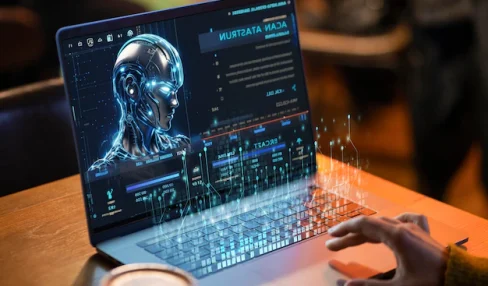What Exactly Is Blockchain Technology? What Is The Process Of Blockchain?
4 Mins Read
Published on: 30 March 2023
Last Updated on: 08 November 2024

toc impalement
You have likely heard the phrase “blockchain technology” concerning cryptocurrencies like Bitcoin during the last several years. What precisely is blockchain technology, you may be asking? Since there is no concrete meaning that the average person can readily comprehend, it seems that blockchain is a platitude, but only in a hypothetical sense.
Explaining “what is blockchain technology,” including the underlying technology, how it works, and how it is significant in the digital domain, is crucial.
What Exactly Is Blockchain?

Blockchain is a technique for preserving records that makes it hard to fake or hack the system or the data stored on it, making it safe and unchangeable.
It is a particular kind of distributed ledger technology (DLT), a digital system for simultaneously recording transactions and associated data in several locations.
To avoid a single point of failure, each computer in a blockchain network keeps a copy of the ledger, and all copies are updated and verified concurrently.
Blockchain is regarded as a sort of database, although it varies significantly from traditional databases in terms of how it handles and saves data. Blockchain holds data in blocks that are digitally connected rather than rows, columns, tables, and files like conventional databases do.
In addition, unlike conventional databases, which are controlled by a central computer, blockchains are decentralized databases run by computers connected to a peer-to-peer network.
What Is The Importance Of Blockchain?
Due to its ability to scale transparency, eliminate fraud, and minimize security threats, blockchain is a very innovative and exciting technology. Many people are often asking about what is the future of blockchain. As this is new technology and many of the users are not aware of technology stability.
Blockchain technology gained notoriety via its connection to cryptocurrencies and NFTs, but it has subsequently developed into a management tool for a variety of international companies like WeSoftYou.
Games are being innovated, healthcare data is being secured, the food supply chain is being made transparent, and blockchain technology is fundamentally changing how we handle ownership and data.
What Are The Blockchain’s Commercial Advantages?
While a blockchain serves primarily as a database for recording transactions, it offers several advantages over conventional databases. Most significantly, it eliminates the potential for manipulation by a bad party and offers the following commercial advantages:
Time Reduction
Blockchain transactions may be completed in minutes instead of days. Since central authority verification is not necessary, transaction settlement is quicker. The time reduction means in other mediums, it will take a huge amount of time, but while using blockchain technologies, it will not take more time for executions.
Money Saved
Transactions need less supervision. Direct exchange of valuables is allowed between participants. Since all participants may see the same ledger in real-time, blockchain eliminates the need for duplicated efforts.
Increased Security
The security characteristics of blockchain guard against fraud, manipulation, and criminality. What about blockchain security? Yes, blockchain is the most secure transactional medium. Whatever you are sending through the blockchain technologies it will go to be in safe hands.
What Is The Process Of Blockchain Technology?
You may have observed that several companies have been using Blockchain technology in recent years. So how does Blockchain technology operate? How much of a shift is this, if any, or is it just an addition? Let’s start with demystifying Blockchain technology as it is still in its infancy and has the potential to be revolutionary.
Combining three popular technologies, blockchain:
- Keys for cryptography
- A group of peers who collaborate using a shared ledger
- A kind of computation that stores network transactions and records
There are two parts to each cryptographic key: the private key and the public key. These secrets aid in the execution of successful transactions between two parties. Each individual has their own set of two keys, which are combined to provide a secure digital identity reference.
Blockchain’s most crucial feature is its ability to provide a secure identity for all participants. In the world of cryptocurrencies, this identification is referred to as a “digital signature” and is used to authorize and control transactions.
A lot of individuals who function as authorities utilize the peer-to-peer network and the digital signature together to agree on transactions and other issues.
They immediately authorize a transaction, which results in a successful secured transaction between the two network-connected parties once it has been mathematically proven to be genuine. In conclusion, Blockchain users employ cryptographic keys to carry out a range of digital transactions throughout the peer-to-peer network.
Bottom Line
There are dozens of other cryptocurrencies that are based on blockchain technology, even if the Bitcoin system is its most well-known use. Blockchain technology applications are expanding quickly, and supporters claim they might bring about significant changes in a variety of sectors.
Read Also:


















Comments Are Closed For This Article